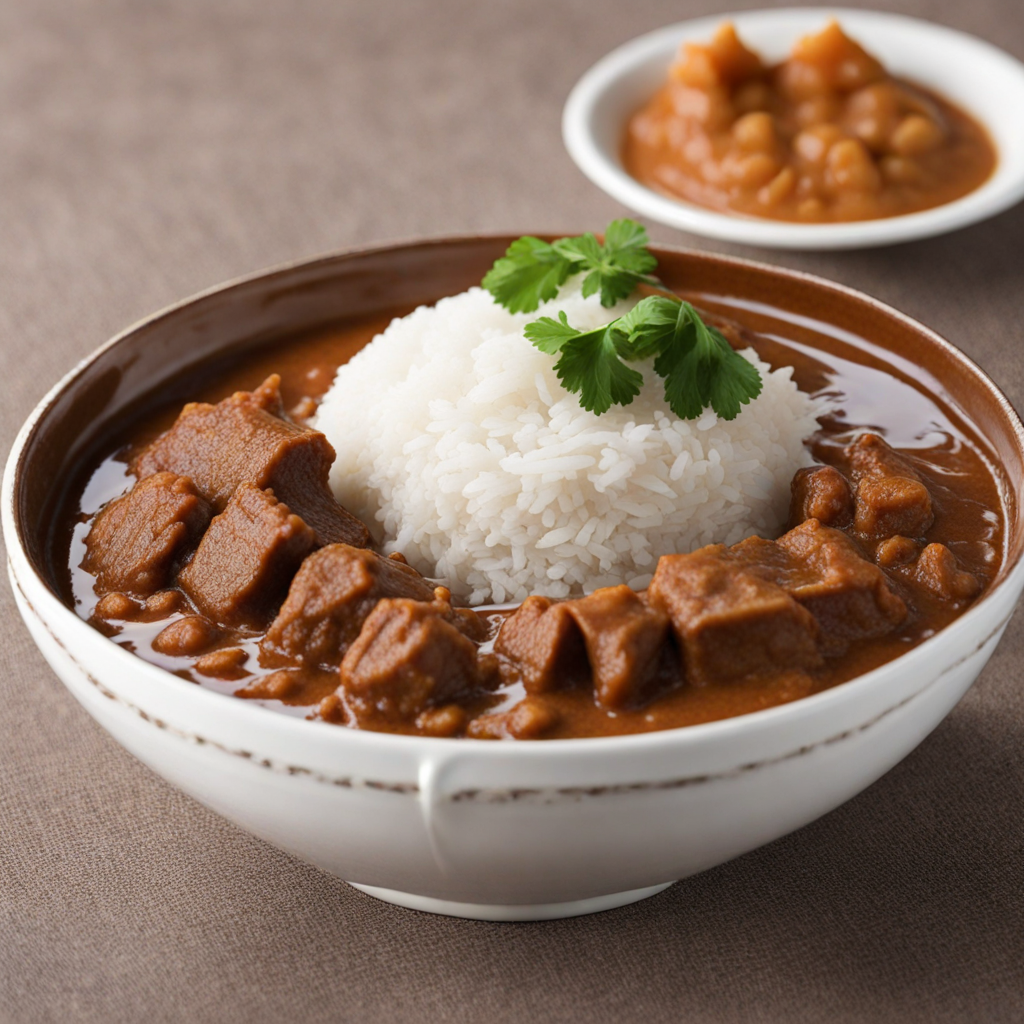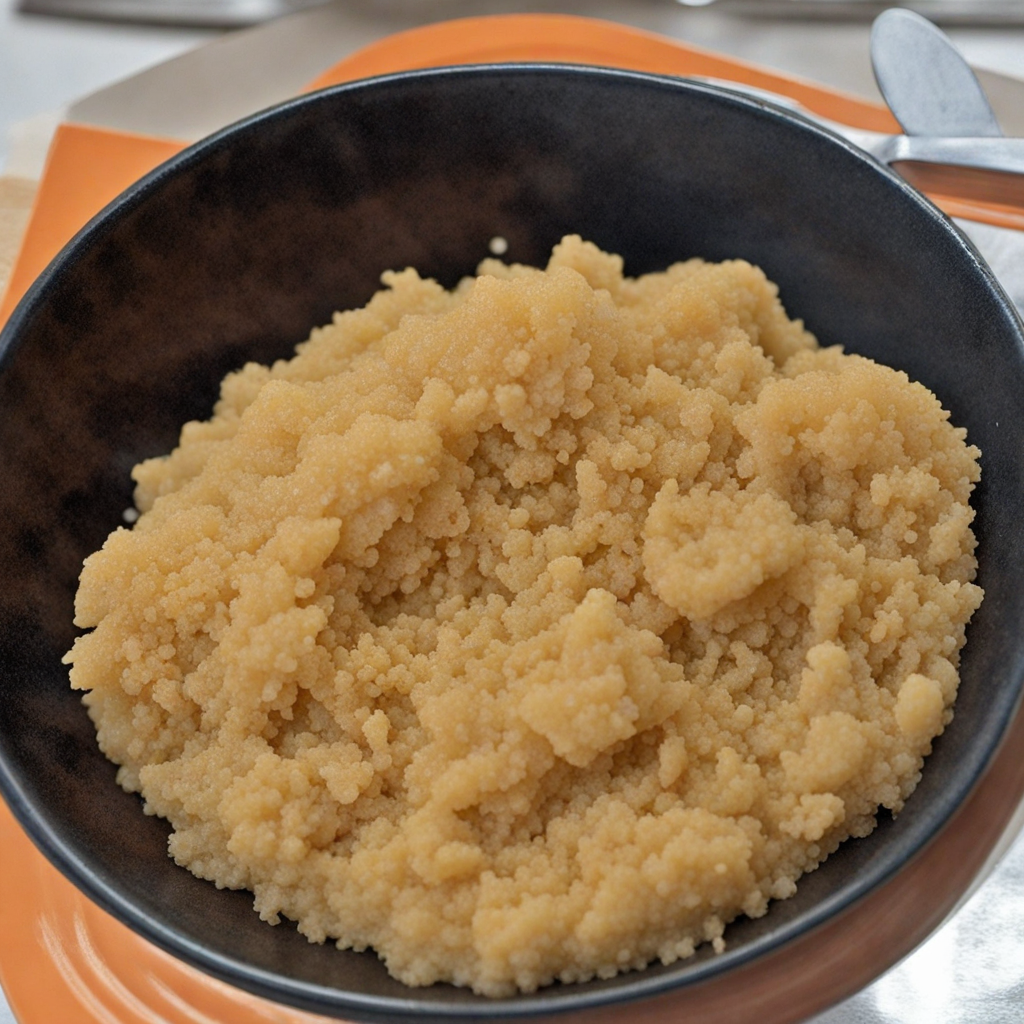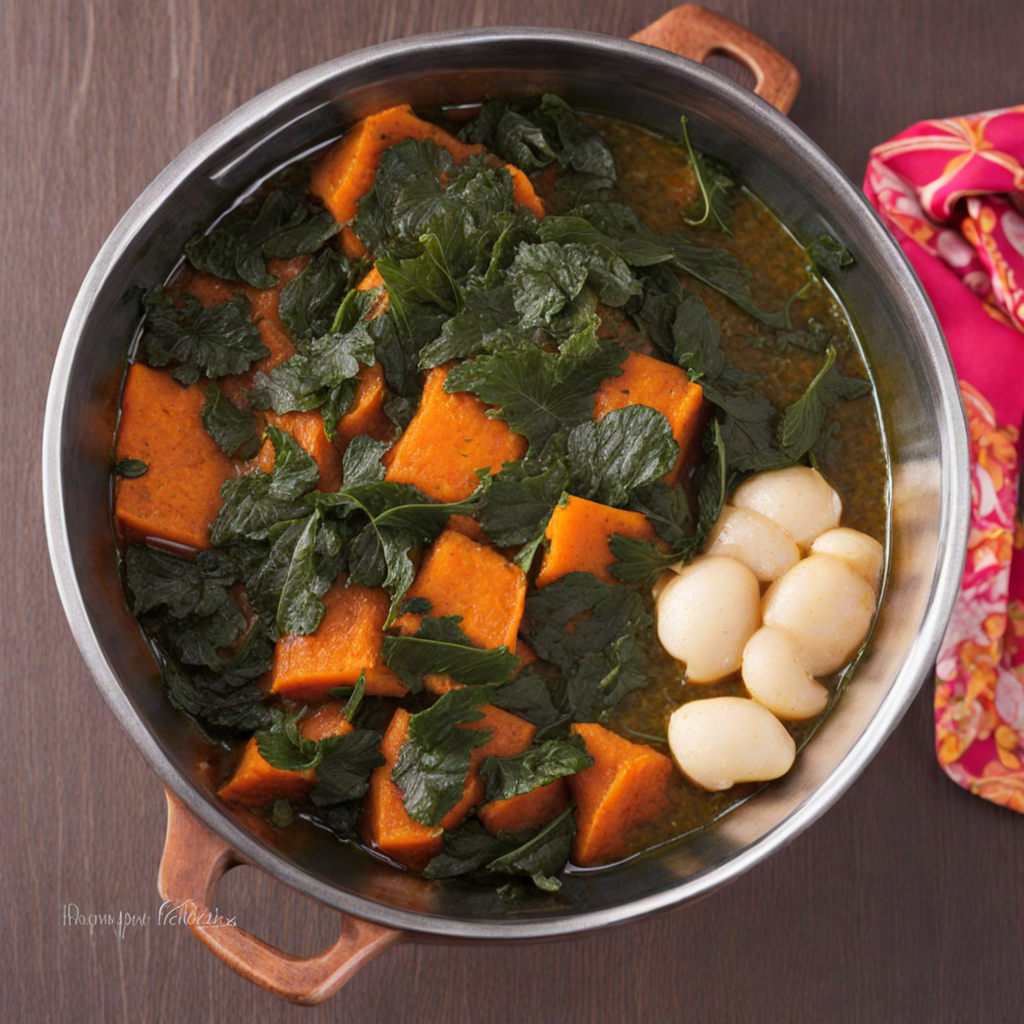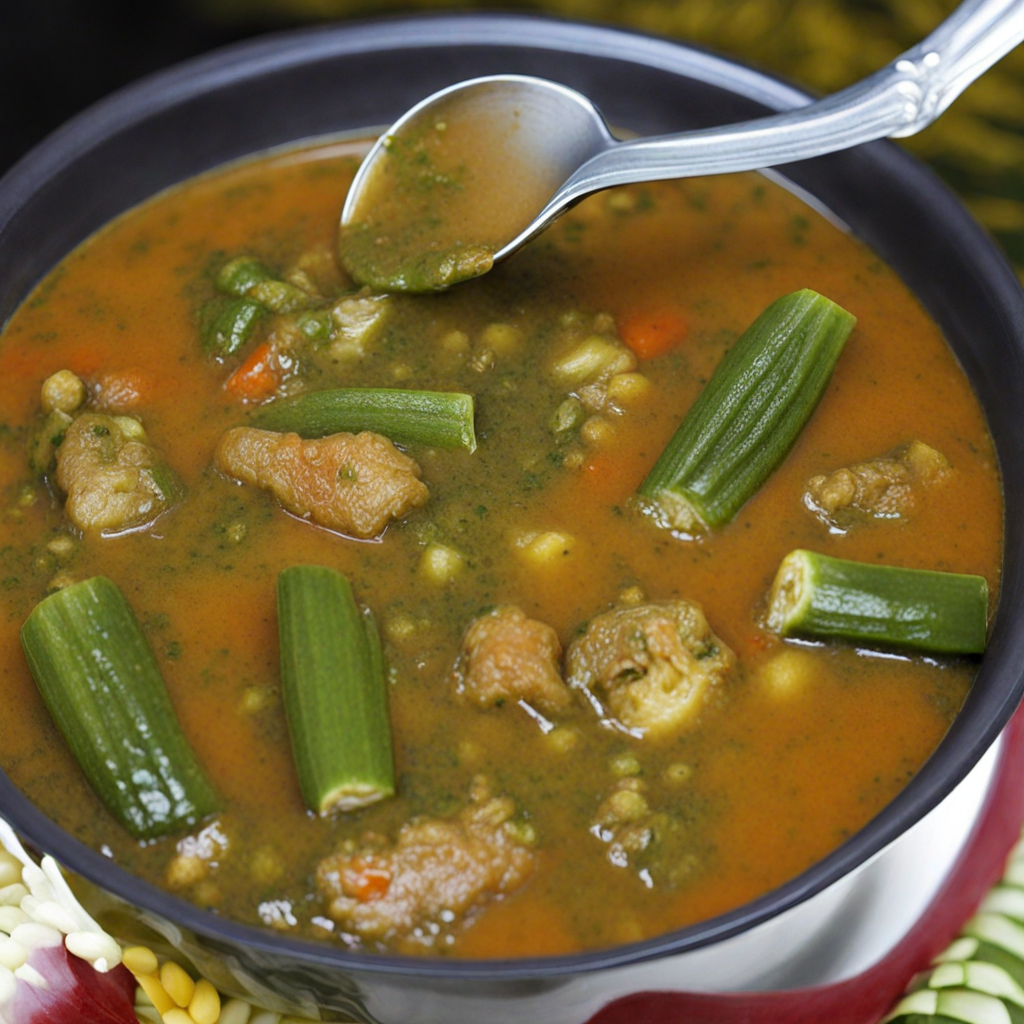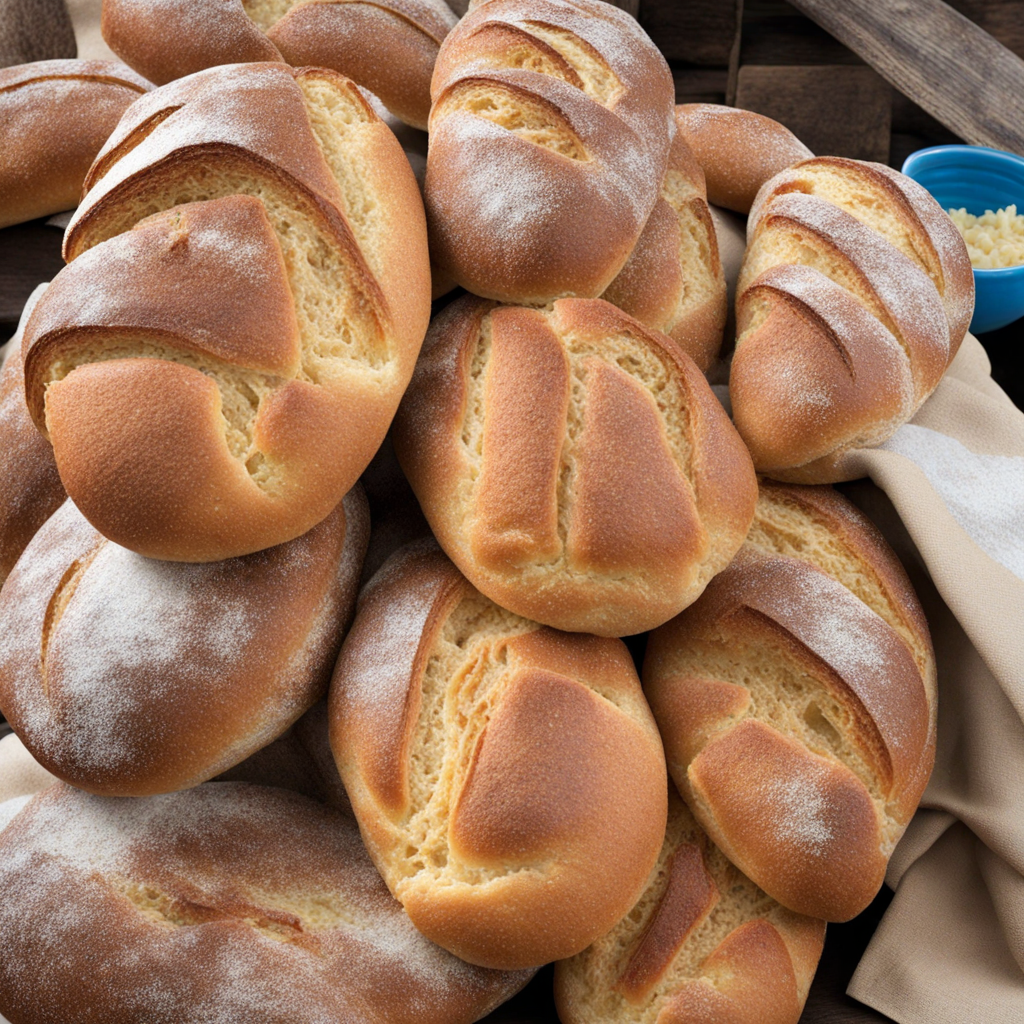Mafé
Mafé, a traditional dish from Guinea, offers a delightful fusion of rich flavors and comforting textures that transport your palate to West Africa. At its core, Mafé consists of tender pieces of meat—often chicken or beef—slow-cooked in a luscious peanut sauce. The sauce is created by blending roasted peanuts or peanut butter with a medley of aromatics such as onions, garlic, and tomatoes, resulting in a velvety, slightly nutty base that envelops the meat. The addition of spices like ginger and chili peppers adds depth and warmth, making every bite a comforting experience. The dish is often accompanied by a variety of vegetables, including carrots, sweet potatoes, and eggplant, which not only enhance the nutritional profile but also add a splash of color and freshness to the dish. The vegetables are typically simmered alongside the meat, allowing them to absorb the rich flavors of the sauce while maintaining their individual textures. Mafé is typically served over a bed of fluffy rice or with a side of fufu, a starchy dough-like staple that soaks up the delicious sauce, creating a harmonious balance of flavors and textures on your plate. What makes Mafé truly special is its versatility and the way it reflects the cultural traditions of the region. Each family may have their own version, incorporating local ingredients or variations in preparation to suit their tastes. The result is a dish that is both hearty and satisfying, perfect for gatherings or a cozy meal at home. As you dive into a bowl of Mafé, you’ll not only savor the unique combination of flavors but also experience a taste of Guinea’s rich culinary heritage.
How It Became This Dish
Mafé: A Culinary Journey Through Guinea’s Rich Heritage Mafé, a tantalizing stew that is a beloved dish in Guinea and much of West Africa, has a history deeply intertwined with the region's cultural, agricultural, and social landscapes. This hearty dish is primarily made with a base of groundnut (peanut) paste, meat (often chicken, beef, or lamb), and an assortment of vegetables, simmered to perfection and served over rice or fufu. The roots of mafé can be traced back to ancient agrarian societies, where the cultivation of peanuts and the art of stewing evolved into a cuisine that reflects the heart and soul of Guinean culture. Origins of Mafé The origins of mafé can be linked to the early agricultural practices of the Mandinka and other ethnic groups in West Africa. Groundnuts, believed to have been introduced to Africa from South America via the transatlantic slave trade, quickly became a staple in many West African diets due to their high nutritional value and adaptability to the local climate. By the 17th century, peanuts had integrated into the culinary traditions of the region, paving the way for the creation of mafé. The dish is thought to have originated in the Mali Empire, which flourished from the 13th to the 16th centuries. As the empire expanded, so did the exchange of culinary techniques and ingredients among different ethnic groups, leading to a fusion of flavors that characterized West African cuisine. The use of groundnut paste as a base for stews became widely popular, transforming simple ingredients into a hearty and nourishing meal. Cultural Significance In Guinean society, mafé is more than just food; it is a symbol of hospitality and community. Traditionally prepared for gatherings, celebrations, and important ceremonies, mafé fosters connection among family and friends. Its preparation often involves communal cooking, where family members come together to chop vegetables, stir the pot, and share stories. This collective effort highlights the importance of community bonds in Guinean culture. Mafé is also significant in the context of social status and identity. Different regions of Guinea may have their unique variations of mafé, reflecting local ingredients, customs, and tastes. For instance, in the coastal regions, seafood might be incorporated into the stew, while inland variations might focus more on meats and seasonal vegetables. This regional diversity enriches the dish and showcases the culinary heritage of Guinea’s many ethnic groups, including the Fulani, Susu, and Maninka. Development Over Time As Guinea underwent various political, social, and economic changes throughout history, so too did the dish of mafé. The colonial era introduced new ingredients and cooking techniques, influencing the way mafé was prepared and enjoyed. The French colonial presence in the late 19th and early 20th centuries brought new culinary ideas to Guinea, leading to a blend of traditional and European cooking styles. In contemporary Guinea, mafé has transcended local boundaries, gaining popularity in neighboring countries and among the African diaspora. As Guineans migrated or traveled abroad, they brought mafé with them, introducing it to new audiences and adapting recipes to available ingredients. This globalization of mafé has resulted in its incorporation into restaurant menus in urban centers, where it is often enjoyed by both locals and visitors seeking an authentic taste of West African cuisine. Modern Interpretations and Global Influence In recent decades, the global food landscape has seen a growing appreciation for African cuisines, with mafé at the forefront. Chefs and home cooks alike have begun to explore traditional recipes, experimenting with flavors and techniques while staying true to the essence of the dish. Modern interpretations of mafé may incorporate a variety of proteins, from plant-based options to exotic meats, while still honoring the foundational element of groundnut paste. The rise of food blogs, cooking shows, and social media has further illuminated the dish, inspiring people worldwide to recreate mafé in their kitchens. This renewed interest has not only celebrated the dish’s origins but has also sparked conversations about the agricultural practices and food sovereignty of West African countries. The emphasis on local ingredients and sustainable farming has become increasingly relevant in today’s culinary discourse, making mafé a symbol of both cultural pride and environmental consciousness. Mafé in the Kitchen: A Recipe for Connection At its core, mafé is a dish that embodies warmth, love, and togetherness. Preparing mafé can be a transformative experience, inviting individuals to connect with their heritage and share it with others. A traditional recipe typically includes the following ingredients: - Protein: Chicken, beef, lamb, or a plant-based alternative. - Vegetables: Carrots, sweet potatoes, and greens like spinach or kale. - Groundnut Paste: The heart of the dish, providing richness and depth of flavor. - Spices: Onions, garlic, ginger, and local seasonings such as chili peppers and bouillon cubes. - Liquid: Chicken or vegetable broth, or water. To prepare mafé, begin by sautéing onions, garlic, and ginger in a large pot until fragrant. Add the chosen protein and brown it on all sides. Stir in chopped vegetables and cook until slightly tender. Next, mix in the groundnut paste and enough liquid to create a thick sauce. Simmer until the protein is cooked through and the flavors meld beautifully, then serve over rice or fufu. Conclusion Mafé is more than just a dish; it is a narrative of Guinea’s history, culture, and resilience. From its ancient roots in the agricultural practices of West Africa to its modern interpretations on global plates, mafé continues to be a source of comfort and a bridge connecting generations. As diners savor each spoonful, they partake in a culinary tradition that tells a story of community, love, and the enduring spirit of the Guinean people. In celebrating mafé, we honor not only a beloved meal but also the rich tapestry of cultural heritage that it represents.
You may like
Discover local flavors from Guinea


